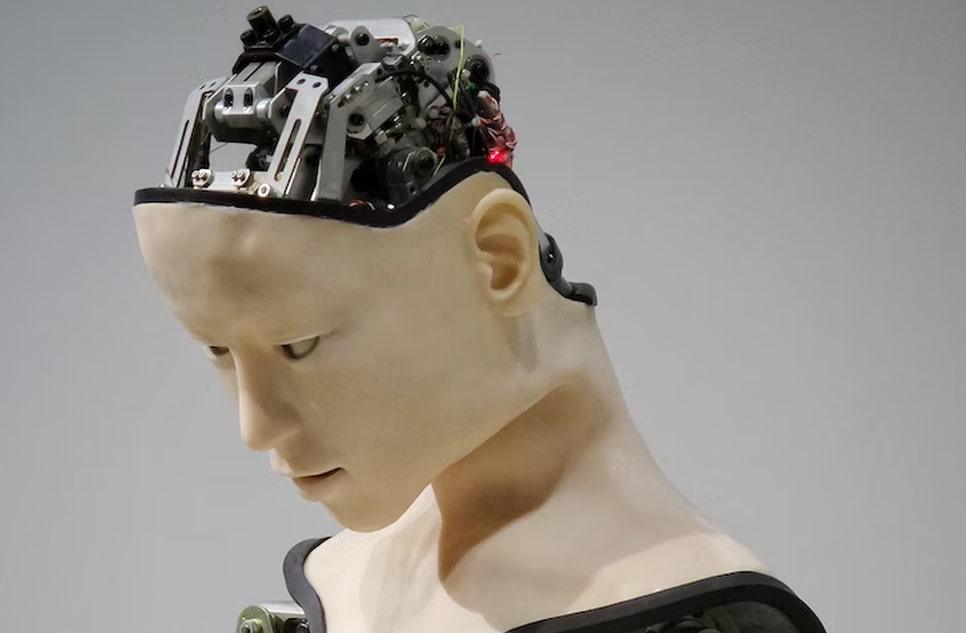
AI A Threat to Cybersecurity?

Artificial Intelligence (AI) has become an integral part of our lives, from helping us with daily tasks to transforming industries. However, with its rise, there’s growing concern about whether AI poses a threat to cybersecurity. In this article, I’ll explore how AI could potentially impact cybersecurity and what we can do about it.
How AI Can Be a Threat
AI has the potential to both enhance and undermine cybersecurity efforts. On one hand, AI tools can help identify and respond to threats more quickly than traditional methods. But on the other hand, they can also be used by malicious actors to launch sophisticated attacks.
-
Automated Attacks: One of the biggest threats is that AI can automate attacks, making them faster and more efficient. For example, AI can be used to create malware that adapts and evolves to bypass security measures. This means that once an AI system is infected, it can learn from its environment and develop new ways to compromise systems.
-
Phishing Scams: AI can also enhance phishing attacks. By analyzing data from social media and other sources, AI can craft highly convincing phishing emails that are tailored to individual targets. This makes it more likely that recipients will fall for the scam and provide sensitive information.
-
Deepfakes: Another concerning development is the rise of deepfakes, which are AI-generated fake images or videos. These can be used to impersonate individuals, spread misinformation, and manipulate public opinion. In the context of cybersecurity, deepfakes can be used to trick people into revealing confidential information or performing actions that compromise security.
How AI Can Help in Cybersecurity
Despite these threats, AI also has a lot to offer in the realm of cybersecurity. Here’s how AI is being used to protect against cyber threats:
-
Threat Detection: AI can analyze vast amounts of data to detect unusual patterns and potential threats. By using machine learning algorithms, AI systems can identify anomalies that might indicate a security breach. This helps in detecting threats early before they cause significant damage.
-
Incident Response: AI can automate the response to certain types of security incidents. For example, if a system detects a potential attack, AI can take predefined actions to contain the threat and prevent it from spreading. This reduces the time it takes to respond and minimizes the impact of an attack.
-
Predictive Analytics: AI can analyze historical data to predict future threats. By understanding the patterns and behaviors of past attacks, AI can help organizations anticipate and prepare for potential threats before they happen.
Balancing the Risks and Benefits
The key to addressing the threat of AI in cybersecurity is to balance its risks and benefits. We need to ensure that while we leverage AI for protection, we also develop strategies to counter its misuse. This involves:
-
Robust Security Measures: Implementing strong security measures and regularly updating them is crucial. This includes using advanced AI tools to monitor and protect systems from emerging threats.
-
Education and Awareness: Educating individuals and organizations about the potential risks of AI and how to recognize and respond to threats is essential. Awareness can help in preventing falling victim to sophisticated AI-driven attacks.
-
Regulation and Ethics: Developing regulations and ethical guidelines for the use of AI in cybersecurity can help prevent its misuse. It’s important to ensure that AI technology is used responsibly and that its deployment does not lead to new vulnerabilities.
In conclusion, AI presents both opportunities and challenges for cybersecurity. While it can be used to launch sophisticated attacks, it also offers powerful tools to detect and respond to threats. By staying informed, adopting robust security measures, and promoting responsible use of AI, we can harness its benefits while mitigating its risks.
FAQs on "AI: A Threat to Cybersecurity?"
1. How can AI be used to enhance cybersecurity?
AI enhances cybersecurity by detecting threats quickly through advanced pattern recognition and anomaly detection. It automates responses to security incidents, reducing reaction times and minimizing damage. Additionally, AI helps predict future threats by analyzing past attack patterns.
2. What are some examples of AI-driven threats to cybersecurity?
AI-driven threats include automated malware that adapts to bypass security measures, sophisticated phishing attacks that use AI to craft convincing emails, and deepfakes that impersonate individuals or spread misinformation to manipulate people into revealing sensitive information.
3. How does AI improve threat detection?
AI improves threat detection by analyzing large volumes of data to spot unusual patterns or behaviors that may indicate a security breach. Machine learning algorithms can identify anomalies that traditional methods might miss, enabling quicker identification of potential threats.
4. Can AI be used to defend against phishing attacks?
Yes, AI can be used to defend against phishing attacks by analyzing emails and other communications for signs of phishing attempts. It can identify suspicious patterns and flag potential phishing attempts, helping users avoid falling victim to such scams.
5. What are deepfakes and how do they pose a risk to cybersecurity?
Deepfakes are AI-generated fake images or videos that can impersonate individuals or create misleading content. They pose a risk by being used in scams, misinformation campaigns, or social engineering attacks to trick people into compromising sensitive information.
6. How can organizations protect themselves from AI-driven cyber threats?
Organizations can protect themselves by implementing robust security measures, regularly updating their systems, and using AI tools to monitor for threats. Additionally, educating employees about the risks of AI-driven attacks and developing ethical guidelines for AI use are important steps.
7. What role does education play in mitigating AI-related cybersecurity risks?
Education helps individuals and organizations recognize and respond to AI-driven threats. By understanding the potential risks and learning how to identify suspicious activities, people can avoid falling victim to attacks and enhance overall cybersecurity awareness.
8. Are there regulations for the use of AI in cybersecurity?
Regulations and ethical guidelines for AI use in cybersecurity are still evolving. It is important to follow best practices and stay informed about emerging regulations to ensure responsible and secure deployment of AI technologies.
9. How can AI be used responsibly in cybersecurity?
AI can be used responsibly by ensuring it is implemented with strong security measures, regular updates, and adherence to ethical guidelines. Responsible use also involves balancing AI’s benefits with its potential risks and being vigilant about emerging threats.
10. What should organizations do to stay ahead of AI-driven threats?
Organizations should invest in advanced AI tools for threat detection and response, keep their security systems updated, and continuously educate their teams about emerging threats. Staying informed about the latest developments in AI and cybersecurity is crucial for maintaining a strong defense.
Categories
Trending Posts
-
Security Update
Supply Chain Cybersecurity: How to Secure Your Extended Network -
Security Update
A Guide to Endpoint Security: What You Need to Know -
Security Update
Top 10 Tools Every Cyber Security Professional Should Know -
Security Update
Exploring the Role of Ethical Hackers in Cyber Security -
Security Update
10 Practical Cyber Security Tips Everyone Should Know -
Security Update
How Blockchain is Revolutionizing Cybersecurity
Why CyberCorp is not a mere SPAC?

We are

CoOperative Corporate
Creates a commonwealth among the partners
Cumulative Growth safeguards against losses to one entity
We believe in

Organic Growth
Promotes growth within the group companies
Ensures Maximum benefits
We do

Integration
Horizontal integration of the various products
Creating new and more effective scalable solutions
© 2022-2024 CyberCorp Limited. All Rights Reserved.







.png)

